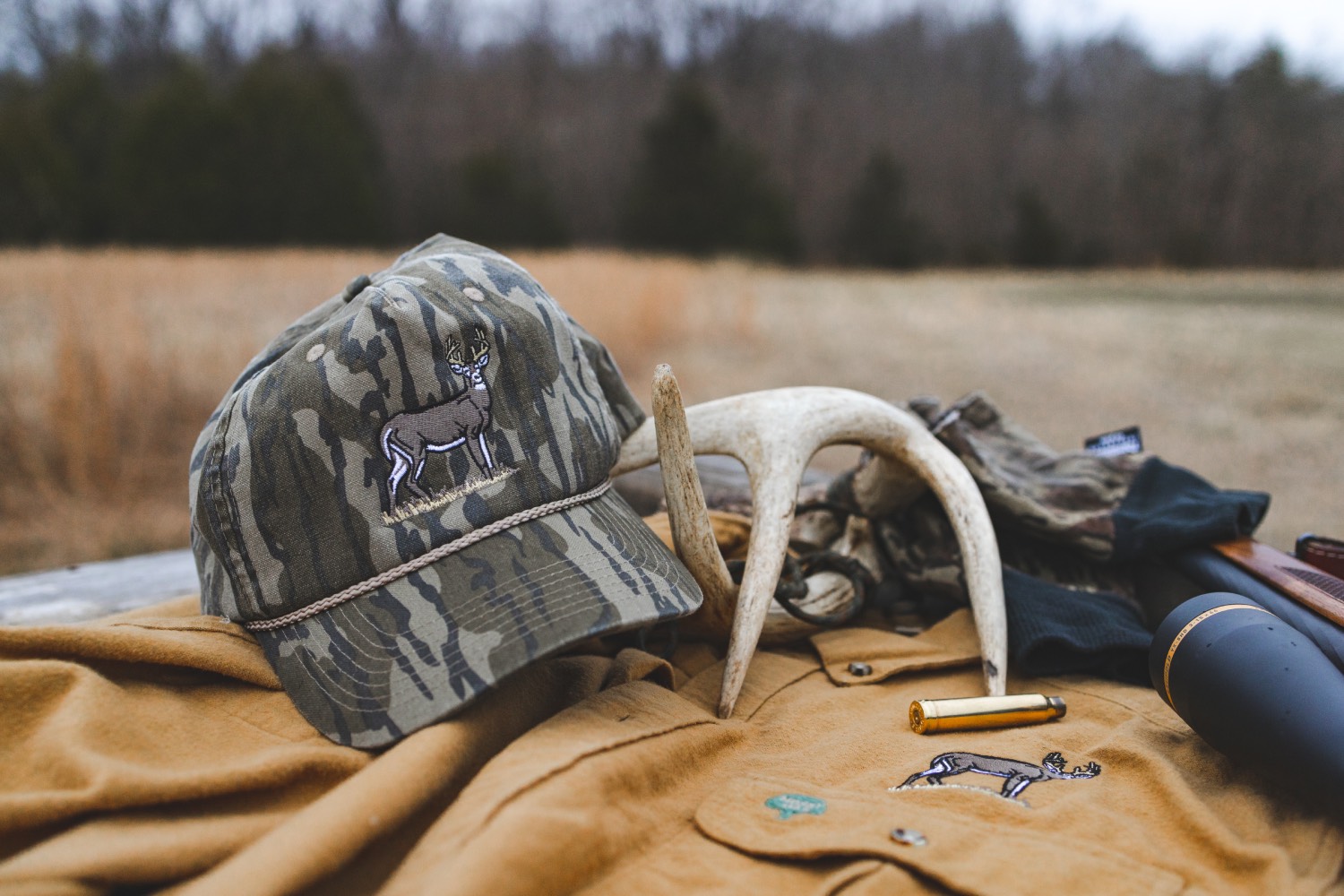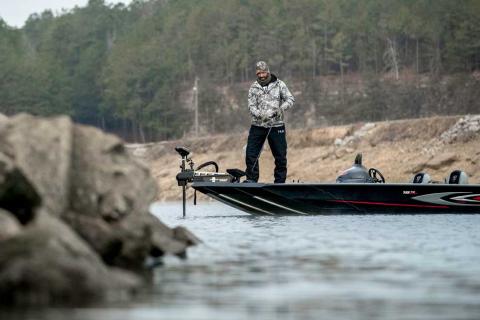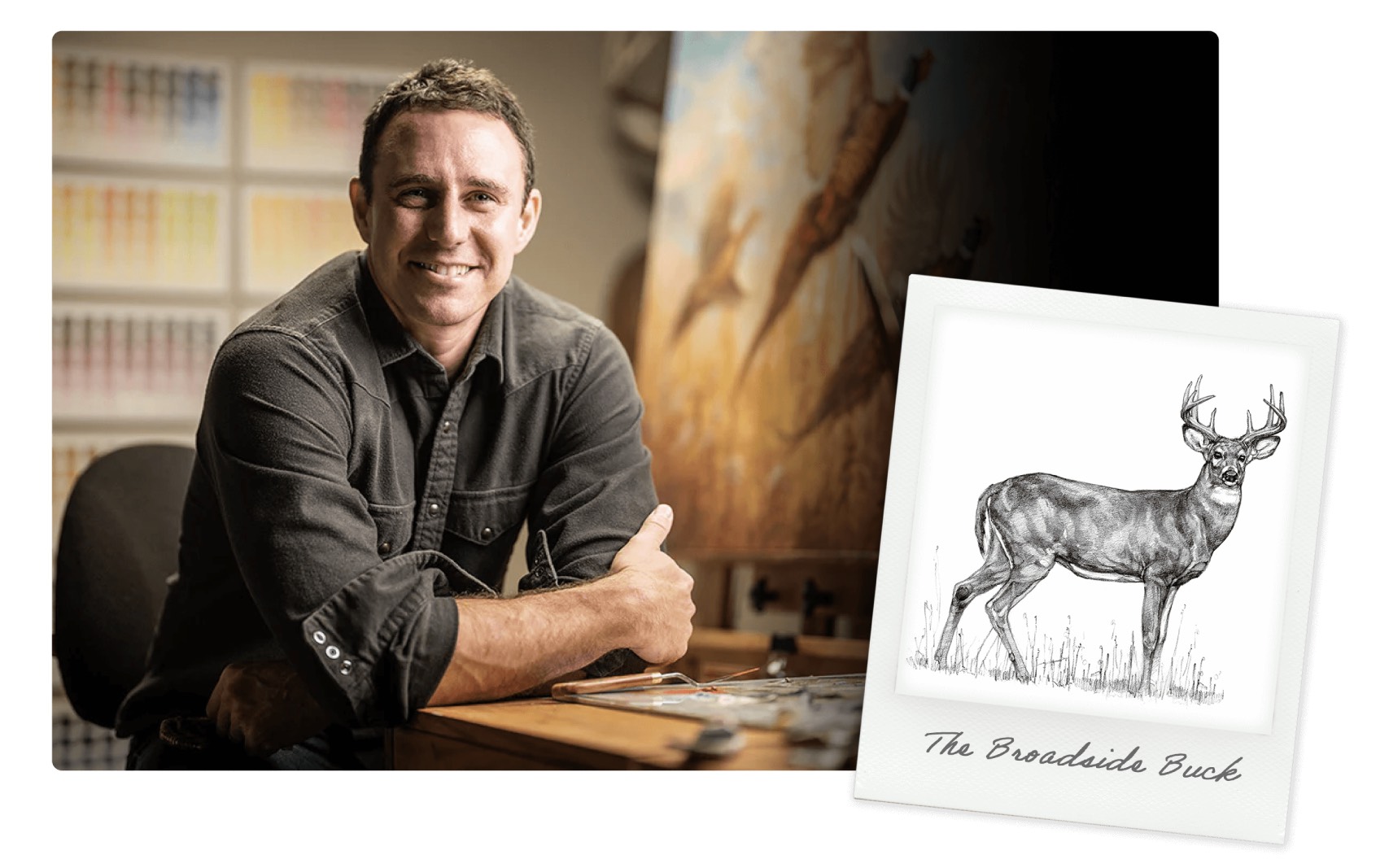
Written by Jessi Cole
To be a wildlife artist is to see the natural world through a telescopic lens, focusing in on the details of the animal and tuning out the surrounding distractions of leaves dropping, birds chirping, squirrels rummaging through the dirt, searching for their long-ago buried nut, and the footfalls of neighboring critters.
Ryan Kirby, wildlife artist hailing from Boone, North Carolina, says “I’ve always approached my paintings like the first time you see a turkey come out on the hillside, strutting into focus. You’re not looking at the squirrel 20 yards to the right—you’re laser-focused on him.”
Kirby, Illinois-raised farm kid, has been outdoors-obsessed since he can remember. He grew up on a farm of corn, soybeans, and wheat, with about 25 head of cattle. His dad and he went hunting together from a young age, sitting still on buckets and waiting for a mature deer to walk in their path.
In fact, it is this way of hunting, a bit forgotten, that Kirby laments. He feels that the trophy hunting mentality has made the outdoor community lose focus of what’s really important—the hunt itself, the story, the experience.
He explains, “I don’t care if it’s a 120-inch deer or a 220-inch deer, if you didn’t kill it the right way or do it with integrity and have fun doing it, we’d rather hear the great story of a 120-inch deer.”
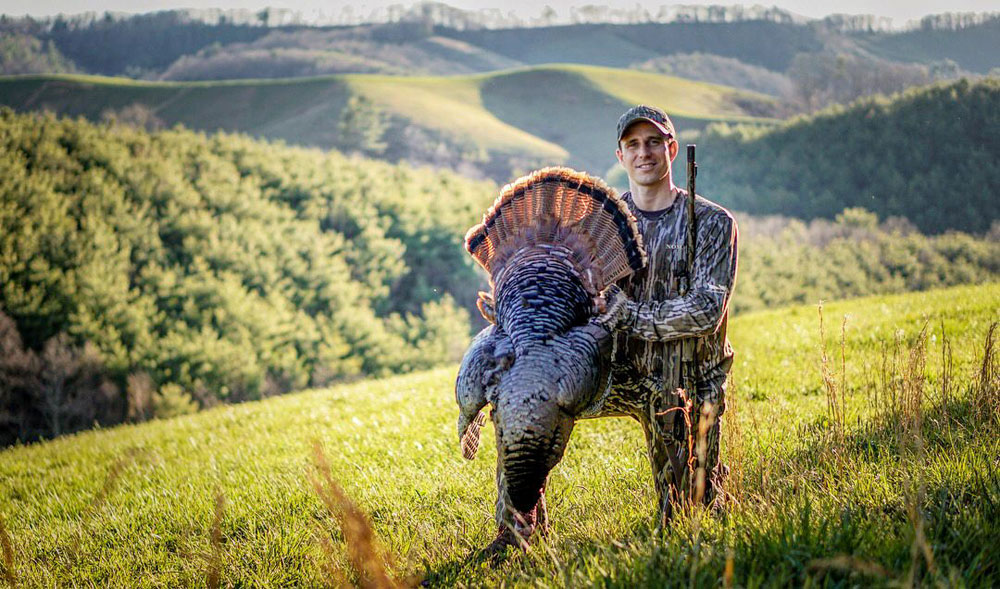
Kirby wishes to get back to his roots and focus on conservation so that his son, Rhett, can grow and have the same fulfilling experiences that he did as a kid, sitting on a bucket with his dad.
He says, “You know, we’ve got two kids now. Rhett’s four and Brooklyn is one. From here on out, everything I do is going to be about them. What can I do to make sure they get the same experiences with turkeys that I got to have? It gives you a longer-term focus.”
Kirby finds that the Mossy Oak pattern Bottomland, is a bit of a metaphor for that experience. The first Mossy Oak pattern, Original Bottomland, was, in fact, a painting—a fact that Kirby resonates with.
Meticulously painted to represent a mature tree’s bark, the Bottomland pattern could be considered old-fashioned, in the terms of camouflage. But millions of hunters all over the world rely on this pattern to keep them hidden from the game they pursue. It continues to connect with hunters in a way that sometimes digitally produced patterns cannot.
Kirby proudly explains his love for his old Remington 870 in Original Bottomland that he calls “The Lead Paintbrush.” It’s his go-to shotgun, and he’s hunted with it since he was 16.
It’s these details, these return to roots and to the classics that Kirby loves.
And he’s, simply put, quite humble about his success.
Kirby first found his footing when winning the State then Federal Jr. Duck Stamp contests as a High School freshman, sophomore, and junior. His colored pencils and oils drawing, “Autumn Calm,” looks something a well-seasoned professional could have done—and Kirby did it as a teenager in art class.
He remembers that the judging session was in D.C. during the prime rut of Illinois, and he was not too happy about having to get out of the woods and into a big city.
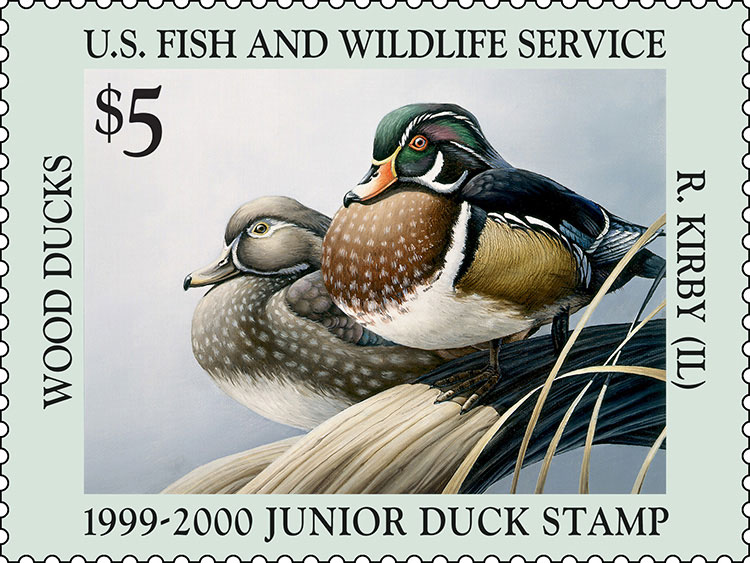
Winning the Federal Jr. Duck Stamp contest was the first time Kirby felt like he could make being an artist a career—something he could hang his hat on.
He says, “When you’re a farm kid you grow up and work for the town, but that got in my head that I could make a living as an artist.”
It was then he pursued fine arts and graphic design in school. Towards the end of his senior year, he answered a classified ad in the back of Turkey Call magazine for a graphic designer position at National Wild Turkey Federation, and he got the gig.
He says the office culture was “probably a lot like Mossy Oak. Shotguns in cubicles, employees coming in late during turkey season, and the occasional echo of a turkey call in the office.”
Kirby worked at NWTF for 7 years, and then felt like he could do more good for the outdoor community as a painter.
And good he did. He’s raised hundreds of thousands of dollars for the hunting community, for organizations like NWTF and Ducks Unlimited. By donating his paintings to charity auctions, Ryan believes he has found his calling to help the outdoor industry with his work.
He says,” It’s one of the best things I’ve ever done as an artist is to help those groups with my art. Not only does it help with funding, but it enriches the person’s life who buys it. I try to do the sportsman just as much honor in my work as the animal.”
His paintings have graced magazine giant covers such as Outdoor Life, Field & Stream, and Turkey Country, and his work can be seen on ammunition boxes, as well.
Not too bad for a self-proclaimed, “redneck farm kid that had a talent for art.”
As an insight into his process, Kirby walked us through the creation of his most recent cover for Turkey Country.
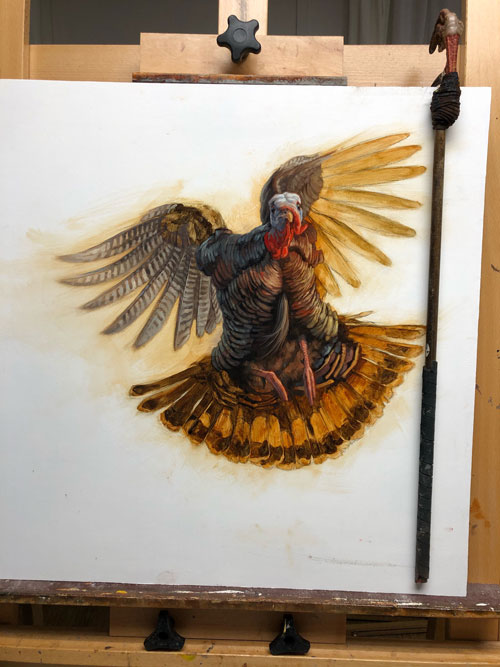
“What I wanted to do was paint a flying turkey coming at the viewer, but those are impossible to find a reference photo of. So, I took a reference photo of a flying pheasant (the body and feet are similar to a turkey), put a tail fan behind it and changed all the feathers. I then ordered a freeze-dried mount of a turkey head for another reference. It’s a combination of photography, holding a tail fan in my studio, and painting from a head.”
In fact, he often Frankensteins images to paint. For his deer antlers, he’ll take four or five images of different antlers and combine then together in Photoshop to create his own unique deer. In this way, his paintings really take on a life of their own.
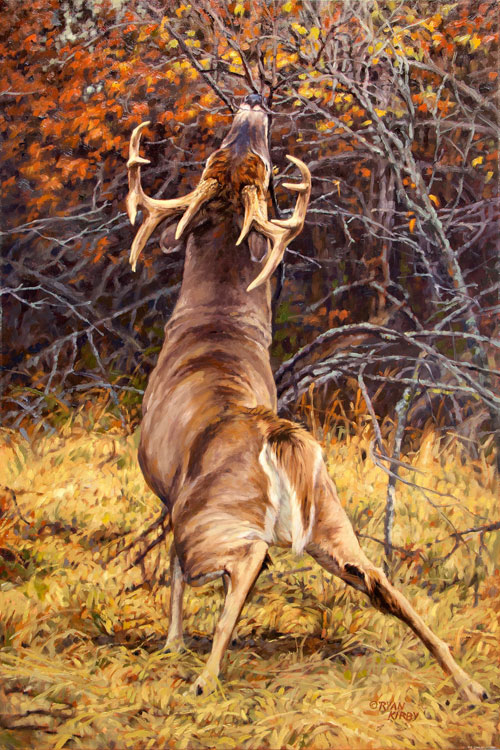
Though his art propels him, Kirby also manages land, living life as a GameKeeper by maintaining 140 acres of Illinois timber. The woods and land is often like a blank canvas, and he works to paint a picture of beauty in his corner of the world by farming and creating a safe haven for the wildlife.
And as Kirby ascribes to everything Mossy Oak believes in—it was a no brainer to partner with him.
We’ve combined old school sketches and paintings to achieve a retro and timeless look. With Kirby’s pen-and-ink drawings, straight from his sketchbook, printed on a faded Bottomland print, the two seamlessly work together for the classic hunter and outdoorsman.
Kirby says, “I’m a fan of what Mossy Oak has done. The collaborations with conservation groups are awesome and a huge win for the industry. I just want to be in that mix. I am proud to be a part of it.”
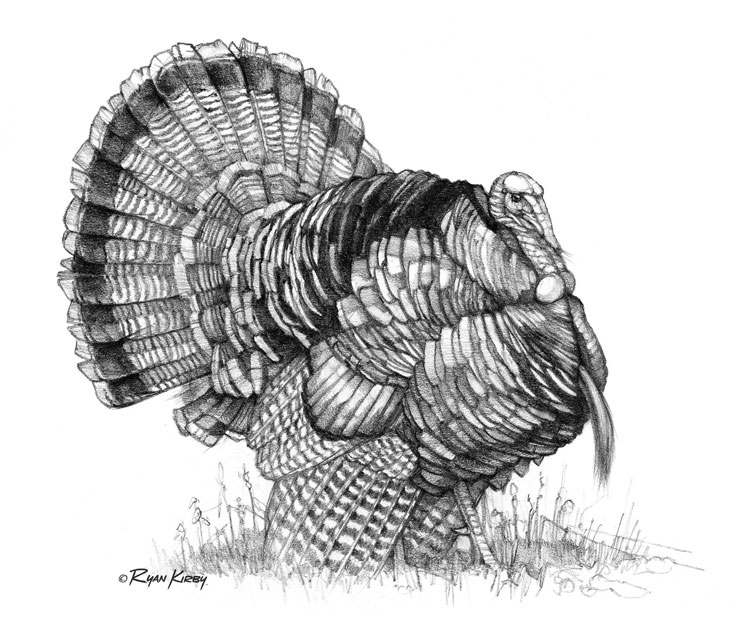
It’s a partnership we’re proud to hold.
For the line of Ryan Kirby x Mossy Oak tees, check out the Mossy Oak Store.
The Broadside Buck Wright Shirt & Cap
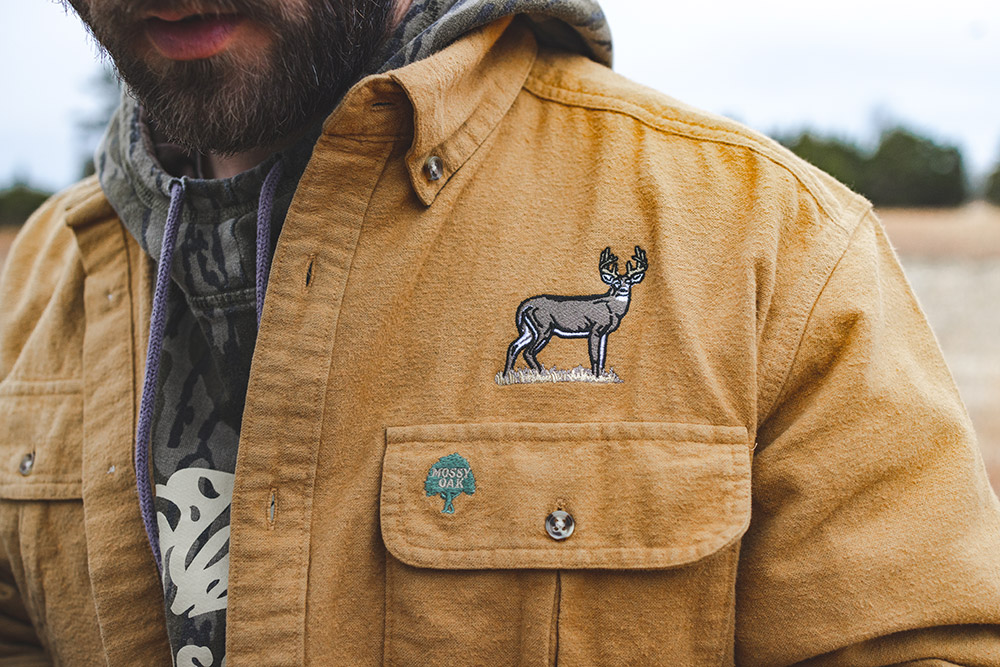
We've partnered with Ryan once again to bring to life a Broadside Buck embroidered Companions shirt featuring art from his "The Growth and Maturity of Whitetail Bucks."
Ryan Kirby is a great friend of Mossy Oak’s. It only felt natural that, when looking for whitetail artwork to add to the Companions collection of embroidered wildlife shirts, his name came up first. The whitetail image chosen was pulled from Kirby’s infamous The Growth and Maturity of Whitetail Bucksprint, a poster print that can be seen in hunting camps around the country. Kirby’s broadside three-and-a-half-year-old buck is proudly featured on the chest of the Whitetail Shirt.
On the Companions line, Kirby says, “I think Mossy Oak taps into something that never goes away, something that spans generations. Regardless of how technology changes of the world changes, hunting, boiled down to the simplest aspect, is about companionship. Whether that’s a buddy, family, your favorite dog—I think just the word “companion” brings back a lot of memories.”
Shop the Broadside Buck collection at The Mossy Oak Store.
